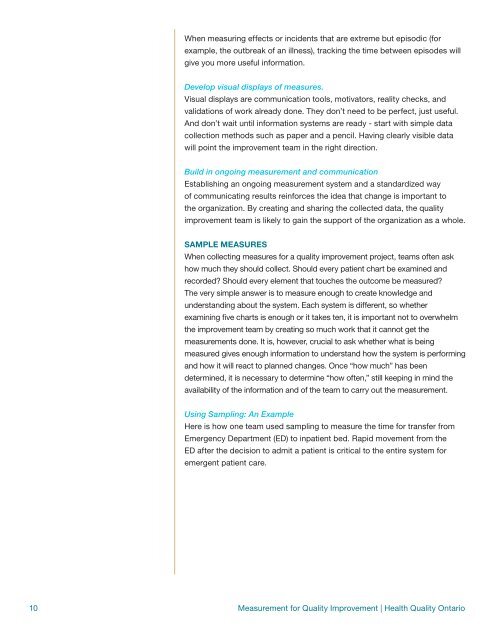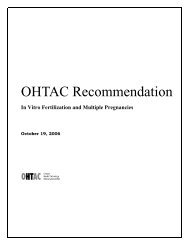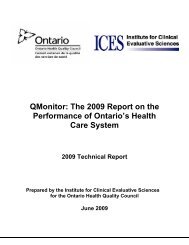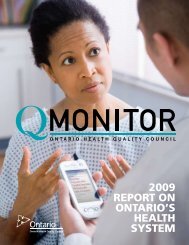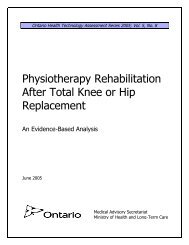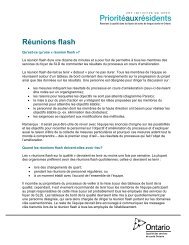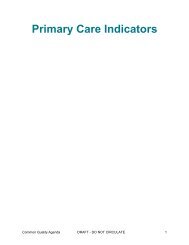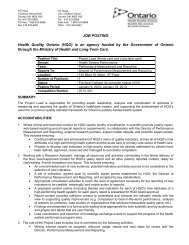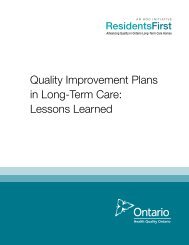Measurement for Quality Improvement - Health Quality Ontario
Measurement for Quality Improvement - Health Quality Ontario
Measurement for Quality Improvement - Health Quality Ontario
Create successful ePaper yourself
Turn your PDF publications into a flip-book with our unique Google optimized e-Paper software.
When measuring effects or incidents that are extreme but episodic (<strong>for</strong><br />
example, the outbreak of an illness), tracking the time between episodes will<br />
give you more useful in<strong>for</strong>mation.<br />
Develop visual displays of measures.<br />
Visual displays are communication tools, motivators, reality checks, and<br />
validations of work already done. They don’t need to be perfect, just useful.<br />
And don’t wait until in<strong>for</strong>mation systems are ready - start with simple data<br />
collection methods such as paper and a pencil. Having clearly visible data<br />
will point the improvement team in the right direction.<br />
Build in ongoing measurement and communication<br />
Establishing an ongoing measurement system and a standardized way<br />
of communicating results rein<strong>for</strong>ces the idea that change is important to<br />
the organization. By creating and sharing the collected data, the quality<br />
improvement team is likely to gain the support of the organization as a whole.<br />
SAMPLE MEASURES<br />
When collecting measures <strong>for</strong> a quality improvement project, teams often ask<br />
how much they should collect. Should every patient chart be examined and<br />
recorded? Should every element that touches the outcome be measured?<br />
The very simple answer is to measure enough to create knowledge and<br />
understanding about the system. Each system is different, so whether<br />
examining five charts is enough or it takes ten, it is important not to overwhelm<br />
the improvement team by creating so much work that it cannot get the<br />
measurements done. It is, however, crucial to ask whether what is being<br />
measured gives enough in<strong>for</strong>mation to understand how the system is per<strong>for</strong>ming<br />
and how it will react to planned changes. Once “how much” has been<br />
determined, it is necessary to determine “how often,” still keeping in mind the<br />
availability of the in<strong>for</strong>mation and of the team to carry out the measurement.<br />
Using Sampling: An Example<br />
Here is how one team used sampling to measure the time <strong>for</strong> transfer from<br />
Emergency Department (ED) to inpatient bed. Rapid movement from the<br />
ED after the decision to admit a patient is critical to the entire system <strong>for</strong><br />
emergent patient care.<br />
10 <strong>Measurement</strong> <strong>for</strong> <strong>Quality</strong> <strong>Improvement</strong> | <strong>Health</strong> <strong>Quality</strong> <strong>Ontario</strong>


